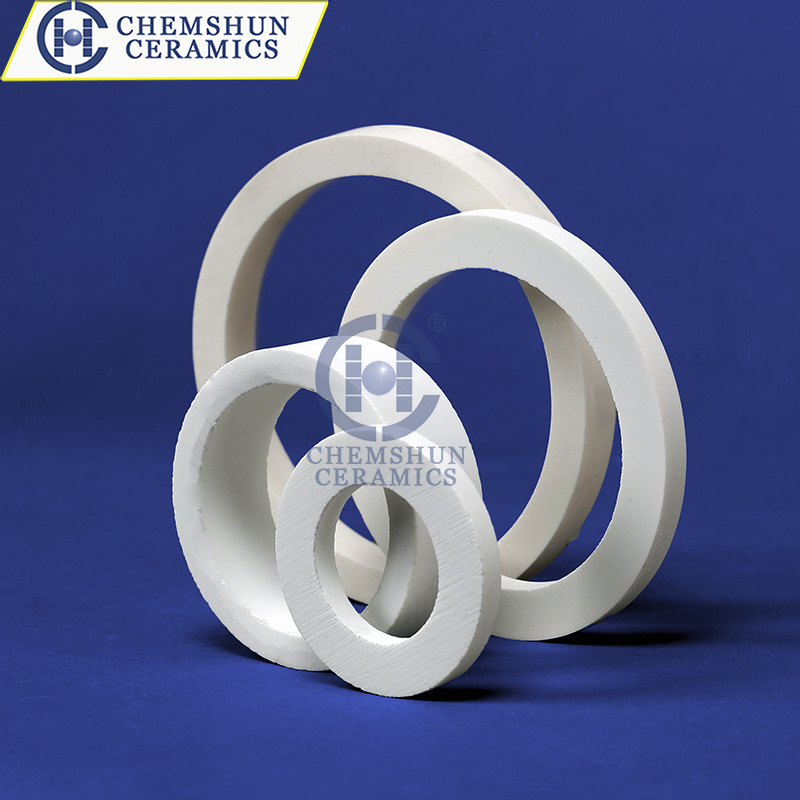Top articles
- High-purity 99.7% alumina ceramics helpful to semiconductor manufacturing technology
- Alumina Ceramic Grinding Balls: High-Efficiency Solutions for Industrial Grinding
- How to Select Suitable Wear-Resistant Ceramic Lining Tiles in the Mining Industry
- Advantages of Ceramic Rubber Composite Liners in Industrial Applications
- How to Install Alumina Ceramic Liners for Long-Lasting Adhesion?
- 99% alumina bulletproof ceramics are the preferred materials for protective devices
- Alumina Ceramic Substrates:Characteristics,Advantages,Disadvantages,and Applications
- Why do alumina industrial ceramics wear out?
- The reason of abrasion resistant ceramic tiles falling off when pasted on equipment
- Seven aspects of advantages & applications of alumina ceramic substrates
Latest articles
- High-purity 99.7% alumina ceramics helpful to semiconductor manufacturing technology
- Alumina Ceramic Grinding Balls: High-Efficiency Solutions for Industrial Grinding
- How to Select Suitable Wear-Resistant Ceramic Lining Tiles in the Mining Industry
- Advantages of Ceramic Rubber Composite Liners in Industrial Applications
- How to Install Alumina Ceramic Liners for Long-Lasting Adhesion?
- Welcome to EXPOMIN 2025
- 99% alumina bulletproof ceramics are the preferred materials for protective devices
- Alumina Ceramic Substrates:Characteristics,Advantages,Disadvantages,and Applications
- Why do alumina industrial ceramics wear out?
- Chemshun Ceramics Chinese New Year Holiday Notice
Your browsing history

The Reason of Ceramic lined pipes wear damage ?
Wear resistant ceramics are composed of equipment elbows and some parts. Inventing this thing in the field of mine transportation can serve people well and reduce some costs.
It has good wear resistance, which can be said to be one of its main characteristics. In the case of erosion and wear, the wear resistance of wear-resistant ceramics is dozens of times that of ordinary steel, which ensures the life of the pipeline; because of its good impact resistance, because most of the transportation is some ore and coal, only the anti-corrosion Only when the impact is good can it resist. This may be the reason why everyone chooses pipelines.
1. Wear analysis and causes of wear-resistant ceramics
1). During the transportation process, the air flow velocity will wear the outer arc tube wall of the wear-resistant elbow relatively. Under the same conditions, the wall wear can be reduced to a great extent by reducing the material impact velocity or changing the material impact angle. Because the wear is caused by the collision or friction between the particles and the inner wall of the pipe, the greater the speed of the particles, the greater the energy of the collision or friction, and the more serious the wear. The amount of wear can generally be expressed as an n-fold proportional increase in the delivery air velocity.
2). In pneumatic conveying, the amount of wear can be roughly considered to be proportional to the cube of the conveying air velocity, that is, the greater the relative velocity between the material and the pipe wall, the greater the contact pressure, the higher the contact frequency, and the wear rate of the pipe wall of the elbow. faster. Expresses the relationship between the air velocity and the amount of wear when transporting fly ash.
3) If the air velocity is too low, the conveyed material will be deposited in the wear-resistant elbow and block the pipe. Therefore, reasonable selection of airflow velocity is the key to ensure the normal operation of the system.
2. There are four wear-resistant elbows for pneumatic conveying
(1) Material properties. The more worn the material, the worse the wear.
(2) Selection of pipe diameter and air volume. If not chosen properly, the wear and tear will increase exponentially.
(3) Mixing ratio. The lower the material-air mixing ratio, the more serious the wear.
(4) Flow rate. The higher the velocity of the material mixed with air in the pipe, the greater the erosion and wear on the pipe wall.
Combining the above, in order to prolong the service life of wear-resistant ceramic pneumatic conveying pipes, it is necessary to consider the mixing ratio, flow rate, and diameter of wear-resistant elbows of conveyed materials. Simply increasing the hardness and thickness of the pipe wall is not the fundamental method to solve the problem









